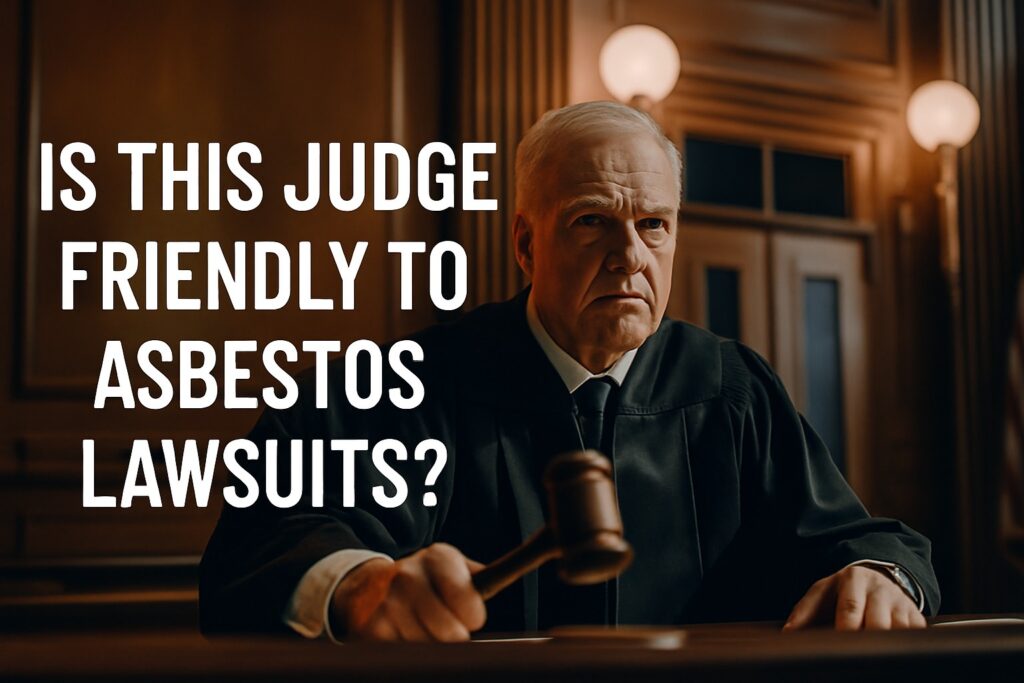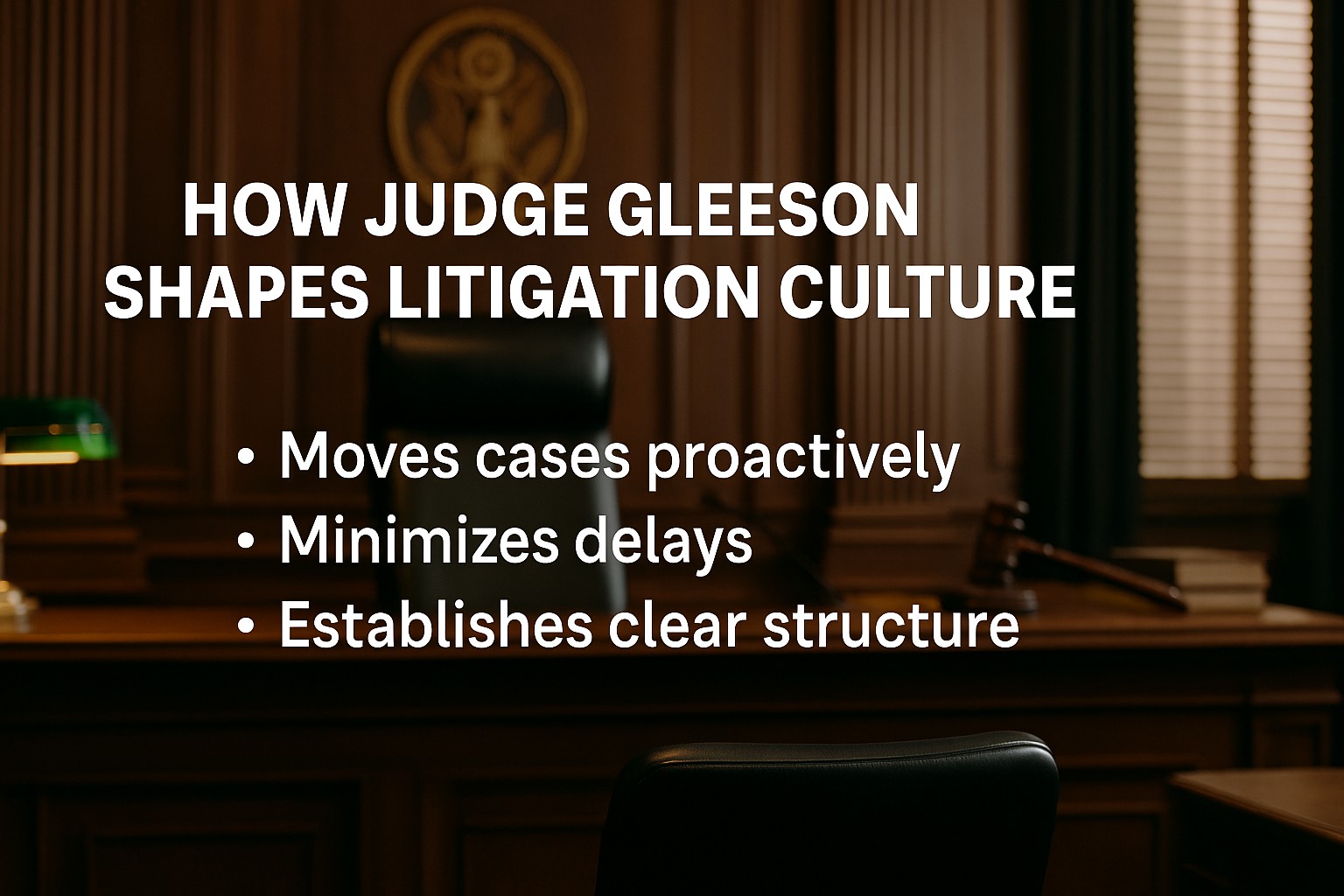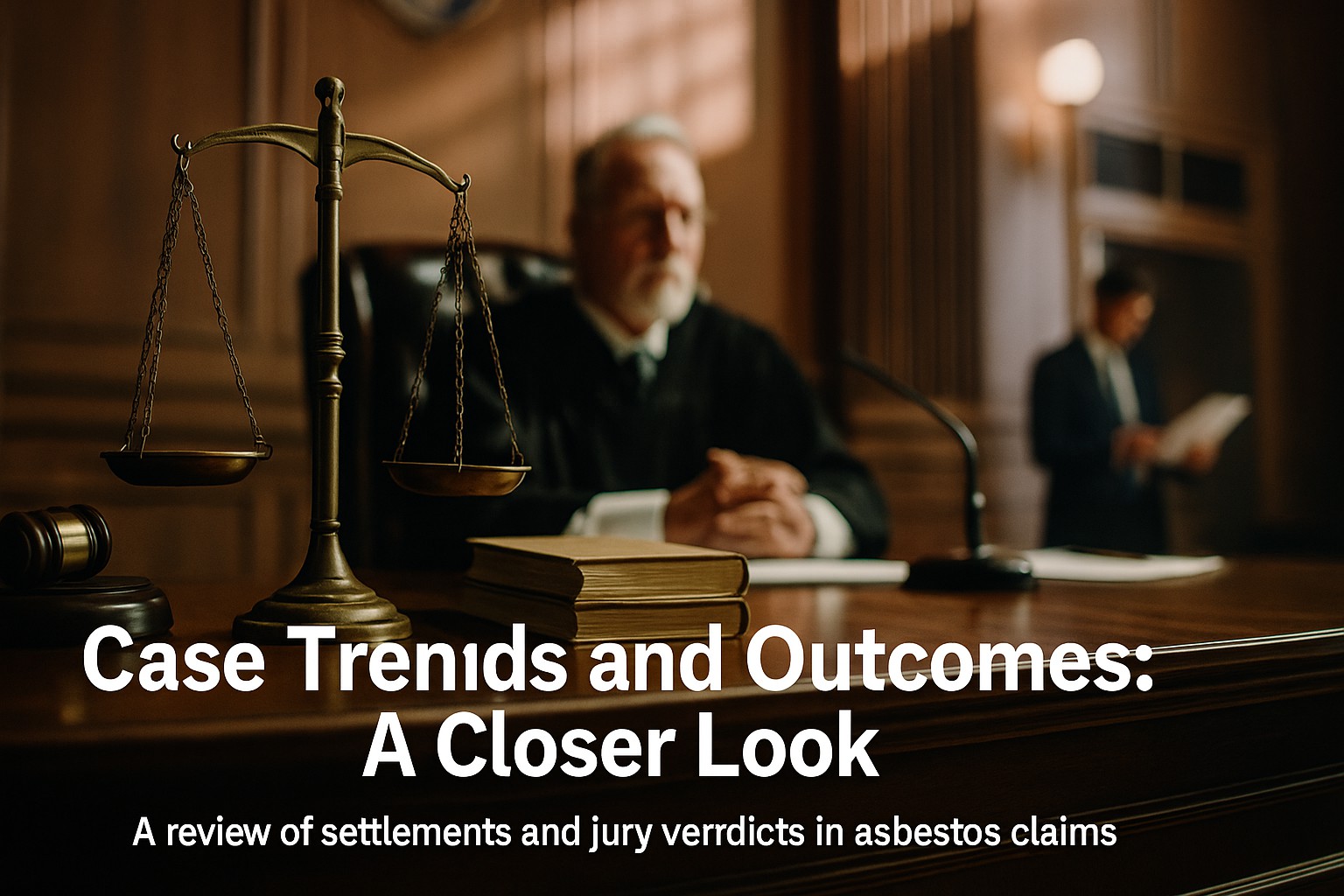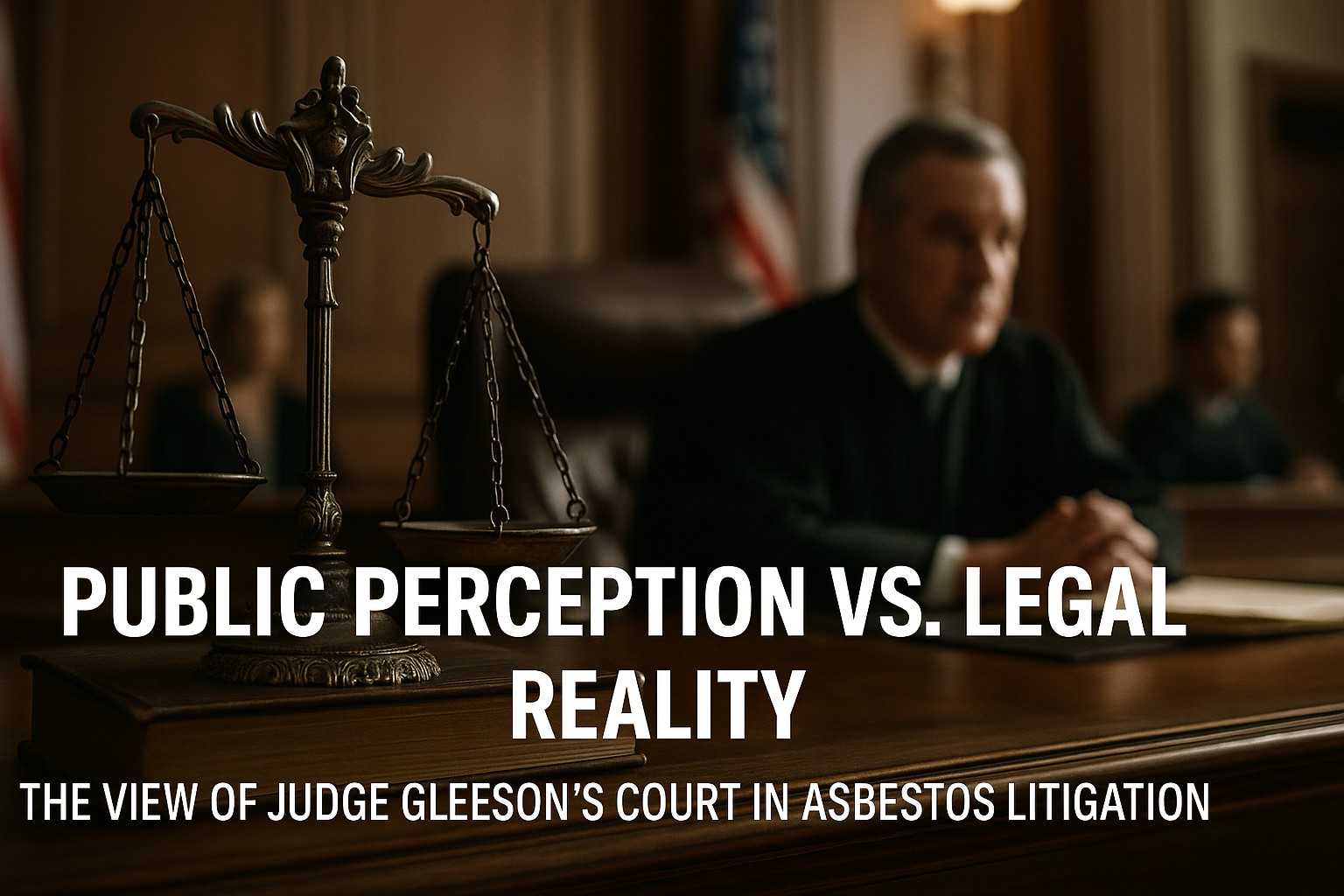Asbestos lawsuits continue to shape the legal world in the United States. These cases deal with people who face serious harm from past exposure to asbestos. Victims often include factory workers, military veterans, and others who came in contact with asbestos at work or at home. They seek justice through the court system, but outcomes often depend on where the lawsuit is filed – and who hears the case.
St. Clair County in Illinois has become a center for asbestos litigation. Judge Andrew J. Gleeson plays a major role there. Some reports say his courtroom leans in favor of plaintiffs. Others say he follows the law and treats both sides fairly.
Many defense lawyers raise concerns. Some believe his court moves too quickly or too easily for asbestos claimants. On the other hand, plaintiffs see it as a place where their cases can be heard with care.
This article looks closely at the facts. It explores Judge Gleeson’s record, the role of St. Clair County, and how this judge shapes asbestos litigation. Is he truly plaintiff-friendly, or is that just a label? Read on for a full legal review.
Who Is Judge Andrew J. Gleeson?
Judge Andrew J. Gleeson serves in the 20th Judicial Circuit of Illinois. His courtroom sits in St. Clair County. He has worked in the legal field for decades and has held the position of Chief Judge. Many asbestos cases have passed through his courtroom. His role often involves managing large numbers of cases, hearing motions, and setting timelines.
Before becoming a judge, Gleeson worked as a lawyer. His background gives him insight into both sides of complex legal matters. He is known for a calm tone in the courtroom. Some lawyers describe him as detail-oriented. Others focus on how he handles high-volume dockets like asbestos litigation. Gleeson has not made many public comments about his approach to asbestos law. Still, his actions in court speak loudly.
Asbestos Lawsuits in Illinois: Legal Background
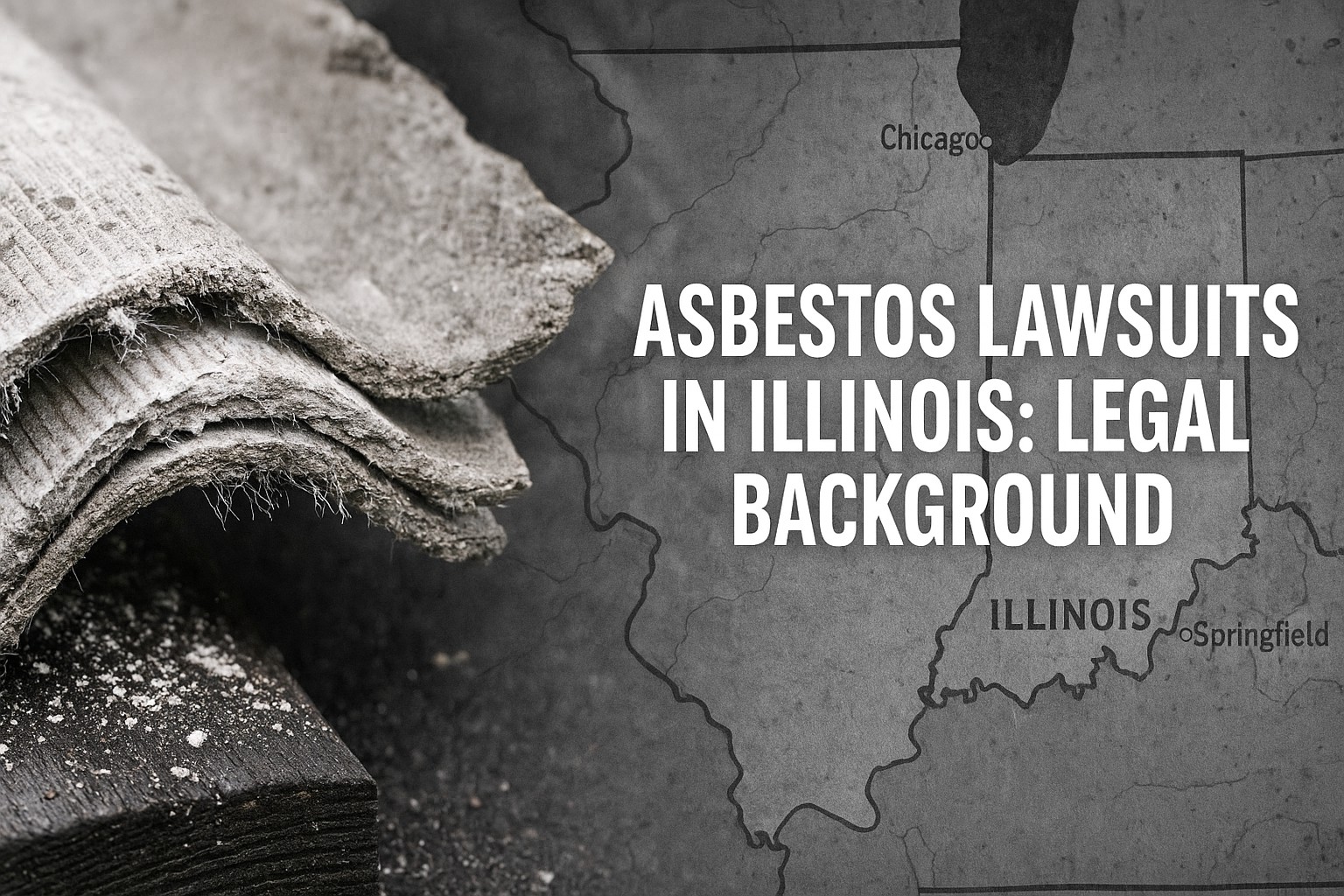
Illinois has a long history with asbestos claims. Many industrial sites across the state used asbestos for insulation and construction. Over time, thousands of workers developed diseases linked to this toxic material. Courts across the state have seen claims rise. But a few counties, like Madison and St. Clair, stand out. These places draw lawsuits from across the country.
Asbestos cases fall under civil law. Plaintiffs must prove they were exposed to asbestos and that the exposure caused harm. They also must show who was responsible. Often, companies deny fault. They may claim the exposure came from another source or argue that too much time has passed.
Courts must move through these cases with care. Judges help set the rules of engagement. They control discovery, expert testimony, and trial dates. Their choices affect how easy or hard it is for each side to make its case. That’s where the question of a judge’s “friendliness” comes into play.
Legal outcomes vary based on court strategy, case management, and public exposure. Read how public figures handle copyright claims in high-profile cases in this post.
St. Clair County and Its Role in Asbestos Filings
St. Clair County sees more asbestos lawsuits than most counties in the country. It ranks behind only a few others, such as Madison County, Illinois, and Baltimore City, Maryland. Plaintiffs’ attorneys often file here even if the exposure happened elsewhere. This practice is legal but often debated.
Why do plaintiffs choose St. Clair County? One reason is the court’s structure. Judges in this district set regular schedules and move cases along quickly. Lawyers know what to expect. Some say this benefits clients who are very sick and need fast outcomes.
Judge Gleeson manages many asbestos cases. He often sets group hearings. This helps move hundreds of cases through the system each year. Critics say this makes the process less personal. Supporters argue it helps families avoid long delays. Either way, Judge Gleeson stands at the center of this system.
What the Data Shows About Judge Gleeson’s Court
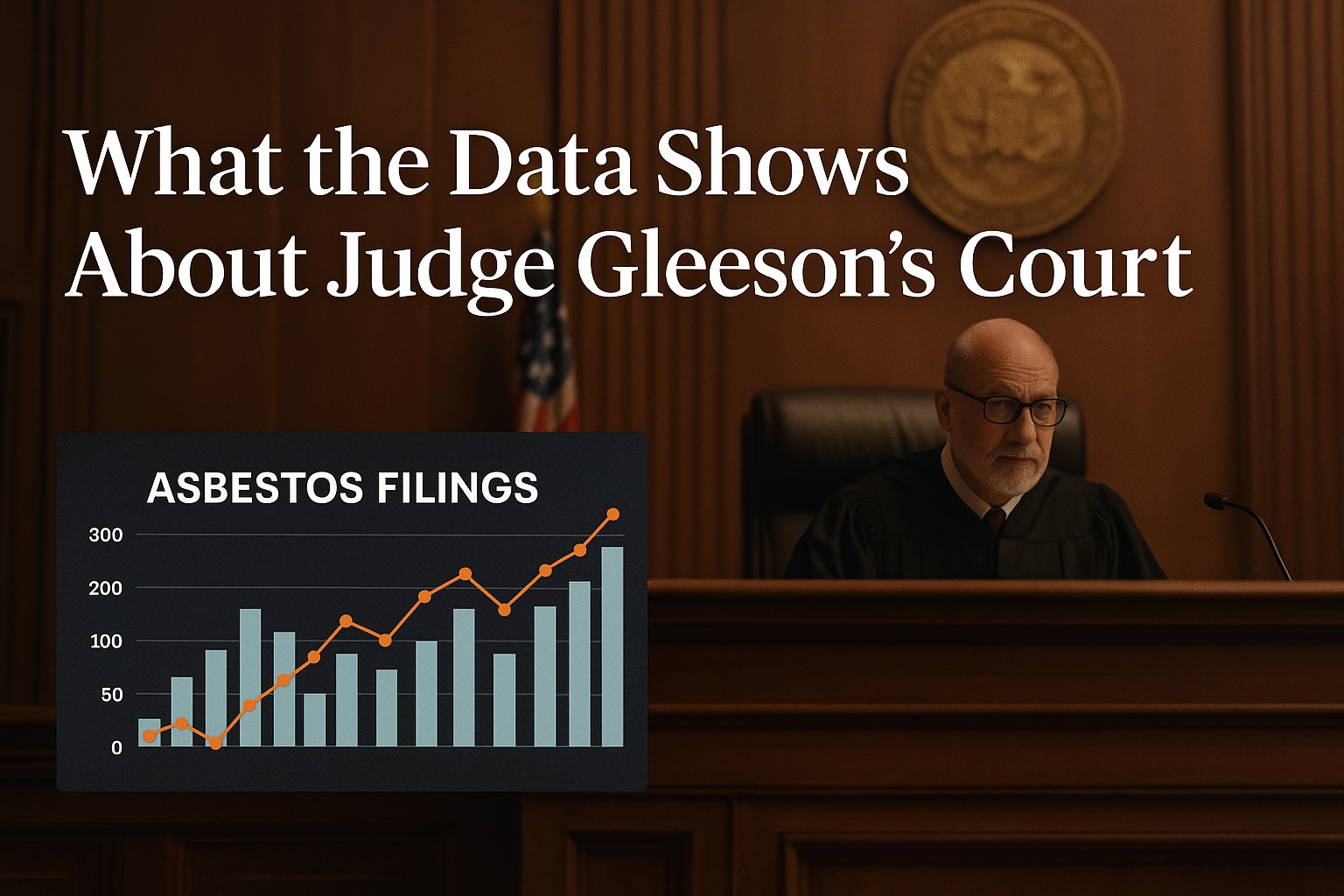
Public data points to high activity in asbestos filings under Judge Gleeson’s court. In some years, over 300 cases have been filed in St. Clair County. Most of these are injury claims linked to past asbestos exposure. Many come from out-of-state plaintiffs. Law firms target this venue because they expect consistency and structure.
Several legal watchdogs have flagged St. Clair County as “plaintiff-friendly.” Reports from groups like the American Tort Reform Association (ATRA) call it a “judicial hellhole.” These labels suggest bias. But the court itself has not faced discipline or ethical charges.
Looking deeper, it’s clear that Judge Gleeson moves cases quickly. He does not delay scheduling hearings. He often rejects requests that could stall proceedings. His goal appears to be fast resolution, not favoritism. Still, speed often helps the plaintiff side more than the defense.
There is no public evidence that shows he breaks the rules. However, trends show a pattern that helps claimants. This may come from court design rather than personal intent.
Statistical Filing Trends in St. Clair County
St. Clair County sees hundreds of asbestos lawsuits each year. The numbers show a pattern. Many filings come from out-of-state plaintiffs. In some years, filings have crossed 300 cases. This makes it one of the busiest counties in the country for asbestos litigation.
The court moves fast. Data from recent court records shows the average time from filing to resolution is less than 18 months. In many other courts, it takes much longer. This speed makes it attractive to plaintiffs. It also pressures defense teams to act early or settle.
Judge Gleeson’s court sets early status hearings. It assigns trial dates months in advance. Parties who miss these deadlines risk losing motions or court approval. The structure allows the judge to keep cases on track without delays.
Is the Court Friendly to Plaintiffs or Just Efficient?
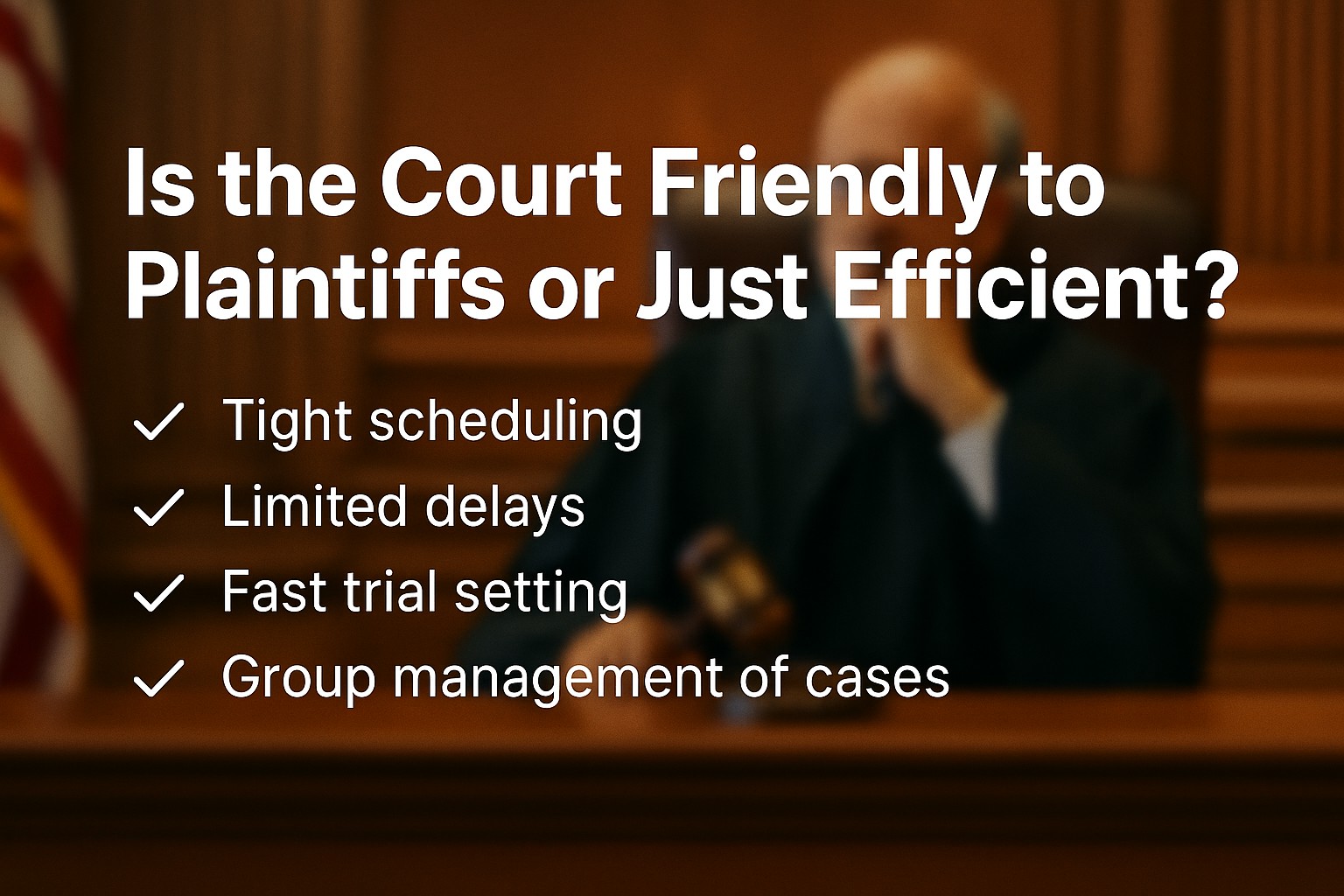
Let’s define “friendly.” In legal terms, it does not mean unfair. It means the court structure and procedures help one side more often. In Judge Gleeson’s courtroom, several features tend to favor plaintiffs:
- Tight scheduling
- Limited delays
- Fast trial setting
- Group management of cases
These practices reduce the time it takes for a case to move from filing to judgment. This is good for sick clients. It also puts pressure on defendants to settle. Insurance companies may prefer to avoid trial in such a fast-moving court.
But efficiency is not the same as bias. Judge Gleeson applies the law. He enforces deadlines. He expects all parties to prepare and act on time. This may hurt defense strategies that rely on delay. That does not make the judge unfair. It means he runs a tight docket.
What Plaintiffs Should Know Before Filing
If you are thinking about filing an asbestos lawsuit in St. Clair County, you may want to know what to expect. Judge Gleeson’s courtroom is known for structure and order. Plaintiffs benefit when courts move fast. Sick individuals often need money for treatment and support. Delays can make cases meaningless.
Here is what you should know:
- Judge Gleeson sets clear deadlines.
- He pushes both sides to avoid stalling.
- The court uses group hearings to save time.
- Trials can come faster than in other counties.
- Plaintiffs often file here even if they live in another state.
Still, this does not guarantee a win. You must prove your case. You need strong evidence, medical records, and expert support. A good lawyer can help prepare your case under the court’s rules.
Law Firms That Frequently File in St. Clair County
Several well-known law firms often file asbestos lawsuits in Judge Gleeson’s court. These include:
- Simmons Hanly Conroy
- The Gori Law Firm
- Maune Raichle Hartley French & Mudd
These firms focus on asbestos claims nationwide. They choose St. Clair County because of its structured system. The judges, including Gleeson, stick to deadlines. This helps sick clients get faster resolutions.
Many of these law firms file for clients who live outside Illinois. The court accepts these cases under civil law rules. This has led to public debate, but the law allows it. Plaintiffs still need strong facts, even in a fast-moving court.
What Defense Teams Must Understand
If you represent a company in an asbestos lawsuit in Judge Gleeson’s court, prepare for a fast process. Defense lawyers often file motions to delay or dismiss cases. In this court, those motions must come early and with strong support.
You should know the following:
- Judge Gleeson expects readiness.
- Late filings or missing deadlines may hurt your case.
- The court does not favor long delays.
- Out-of-state defendants often face uphill battles in jury selection.
- The local jury pool may show sympathy toward claimants.
Defense strategy must adjust. It helps to work with local counsel who knows Judge Gleeson’s expectations. Preparation, early motion practice, and good expert witnesses matter more here than in slower courts.
How Judge Gleeson Shapes Litigation Culture
Judges set the tone for their courtrooms. Judge Gleeson’s tone is active. He moves cases, He avoids waste He creates a structure where parties must act, not stall. This shapes how lawyers behave. It also affects how firms choose where to file.
His style has made St. Clair County a top choice for asbestos filings. It may also push companies to settle cases early. Some legal experts say this reduces trial risk for victims. Others say it creates pressure for fast payouts, even on weak claims.
Judge Gleeson does not change the law. But his role shapes how the law moves. His actions create ripple effects across the asbestos legal field.
Examples of Judge Gleeson’s Court Decisions
One major asbestos case involved a Navy veteran who claimed exposure while working in shipyards. The case moved quickly. Within a year, the court reached trial. The jury awarded the plaintiff over $3 million in damages. This became one of the larger verdicts in that year.
In another case, a company requested more time to file expert reports. Judge Gleeson denied the request. He cited the case management order and said both sides had equal time. The defense had missed the deadline.
These examples show how Judge Gleeson enforces structure. He expects parties to follow the schedule. He listens to both sides but rarely makes exceptions. His rulings often come with clear reasons. His courtroom stays consistent, which makes the system work.
Case Trends and Outcomes: A Closer Look
Many cases in Judge Gleeson’s court settle before trial. This is common in asbestos litigation. The court’s schedule encourages early resolution. Some trials do happen, and juries in St. Clair County have issued large awards.
Still, not every case wins. Some are dismissed. Others go to trial and end in defense verdicts. There is no perfect track record either way. What stands out is volume. This court processes more asbestos lawsuits than most.
Some analysts say this creates an uneven burden on defendants. Others say it gives more victims their day in court. The numbers show steady filing rates, fast case movement, and a high rate of settlements.
Pressure on Insurers and Defense Teams
Fast court timelines change how insurance companies handle asbestos claims. In Judge Gleeson’s court, cases move quickly. This forces insurers to decide early. They must choose whether to settle or go to trial.
Settlement becomes more likely when trials happen fast. Long delays often help defense teams. But this court removes delay as a tool. Insurers may settle even if the case is weak, just to avoid costly trial risk.
Some defense lawyers say this setup is unfair. Others adjust their strategy. They gather evidence early. They use pre-trial motions to reduce damages or limit testimony. Still, the pressure remains.
Judge Gleeson does not push settlements. But his structure creates a path where early deals make sense. This shifts the balance in favor of plaintiffs. It also changes how large companies manage legal risk.
When multiple people suffer harm from the same cause, class action lawsuits offer a path forward. Learn how class action lawsuits work and how to file them the right way.
Criticism and Praise from Legal Observers
Critics say Judge Gleeson presides over a “lawsuit mill.” They argue that the court encourages mass filings and out-of-state claims. They point to the high number of cases and quick turnaround.
Supporters say the court gives victims a fair shot. They see Judge Gleeson as firm but fair. His court does not delay justice. Plaintiffs have a real chance to be heard without waiting years.
Trade groups on the defense side push for reform. Plaintiff attorneys praise the structure. Both sides recognize that Judge Gleeson runs a busy, efficient court.
The Debate Around Venue Shopping
Venue shopping happens when lawyers file lawsuits in a county that may give them a better outcome. In asbestos litigation, St. Clair County is often seen as one of those places. This is not illegal. Civil law allows plaintiffs to choose where to file if certain rules are met.
Critics say this practice creates unfair pressure on defendants. They claim local juries may favor plaintiffs. They also say fast schedules limit the time for full discovery. Trade groups and business coalitions have called for changes.
Some lawmakers have proposed venue reform. They want to limit out-of-state filings in counties like St. Clair. Supporters of the current system argue that victims should choose a court that moves quickly. They say this gives families a real chance at justice.
Judge Gleeson does not set these rules. He applies them. His courtroom reflects how the law works in Illinois. The state legislature would need to change venue laws if they want different outcomes.
Public Perception vs Legal Reality
The public often hears about big verdicts or mass filings. This shapes the image of Judge Gleeson’s court. People may think it favors plaintiffs by default. But reality is more complex.
The judge follows court rules. He applies the law. The court’s design – not personal bias – leads to fast movement. Each case still requires proof. Defense teams can and do win here.
Public perception often comes from news headlines. Legal reality comes from court records and rulings. A full review shows a structured court, not a biased one.
How Legal Groups Rank St. Clair County and Judge Gleeson
National legal groups have named St. Clair County as one of the most active asbestos courts. The American Tort Reform Association (ATRA) included it in its list of “Judicial Hellholes” in 2024. The report called the court “plaintiff-friendly.”
This ranking draws attention to how Judge Gleeson manages his docket. ATRA claims the court’s structure puts businesses at risk. It says out-of-state plaintiffs take advantage of local rules. It also criticizes the number of lawsuits filed in one court.
Supporters of the court push back. They say fast trials and structured hearings help sick clients. They also say judges apply the law fairly. The court’s high ranking means it stays in the spotlight.
These rankings do not carry legal weight. They reflect opinion. But they do shape how lawyers, insurers, and lawmakers view the court.
Conclusion
Judge Andrew J. Gleeson presides over one of the busiest asbestos dockets in the country. His courtroom sees high filing rates, tight deadlines, and a steady flow of settlements. Plaintiffs often choose St. Clair County because the process moves fast and follows a clear structure.
This does not make Judge Gleeson biased. It makes him efficient. The court does not guarantee wins. It gives both sides rules to follow. Plaintiffs may feel helped by the pace. Defendants may feel pressure from it. That is the nature of structured litigation.
In truth, “friendly” is a loaded word. A better term may be “organized” or “predictable.” Judge Gleeson shapes how asbestos law works in his county, but he stays within legal bounds. His court remains one of the most important in this field.
Poland Spring Water Lawsuit Breakdown: Misleading Labels or Legal Stretch?
Frequently Asked Questions (FAQs)
What makes Judge Gleeson’s court stand out in asbestos litigation?
His court moves cases quickly. Deadlines stay firm. Both sides know what to expect. The process feels structured and predictable.
Does Judge Gleeson favor plaintiffs in asbestos cases?
Court records show he enforces rules strictly. The fast pace may help plaintiffs, but no proof shows unfair bias in his rulings.
How do defendants handle cases in his courtroom?
Defense lawyers prepare early. They file motions on time and bring experts fast. The court does not allow long delays or weak excuses.
Can out-of-state victims file asbestos lawsuits in St. Clair County?
Illinois law allows out‑of‑state plaintiffs to file if certain conditions apply. Many choose this court because of its clear system and faster results.
What is the usual timeline for asbestos lawsuits under Judge Gleeson?
Most cases move from filing to resolution in about one to one‑and‑a‑half years. Some finish sooner if both sides reach an early settlement.
How does the court’s speed affect insurance companies?
Insurers often settle early to reduce trial risk. The tight schedule limits delay tactics. This keeps pressure on defendants to resolve disputes fast.
Why do law firms across the country pick St. Clair County?
Firms trust its structure. The judges apply deadlines with care. The court maintains consistency, which helps them plan legal strategy.
What do critics say about the court’s reputation?
Opponents claim it invites mass filings and favors plaintiffs. Supporters see it as fair and efficient. Both sides agree it is one of the most active asbestos courts in the nation.
How do juries in this county usually respond to asbestos claims?
Local juries tend to show sympathy toward victims who prove strong evidence. They have awarded large verdicts in serious exposure cases.
Is Judge Gleeson changing asbestos law in Illinois?
He follows existing statutes and case law. His role shapes procedure, not legislation. His methods highlight how judicial management can influence outcomes without crossing legal lines.
This article offers general information for public knowledge and does not provide legal advice. Always consult a licensed attorney for guidance on asbestos-related claims or jurisdictional matters.

